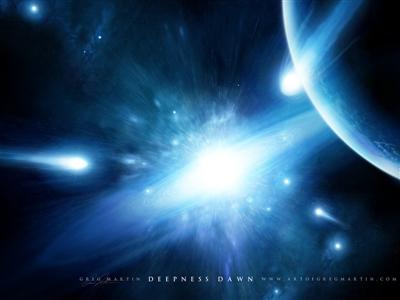
On the Horizon
 |
The most immediate advances in the theory of string theory may arise as a result of new particle accelerators and the study of black holes. Progress has already been made on understanding the thermodynamics of black holes, and D-branes may allow further progress in this field 5. In the realm of particle accelerators, current theory holds that supersymmetry may well exist at the electroweak scale. Once accelerators reach above 1 TeV (1000 GeV) it may be possible to detect some supersymmetry in the four dimensional world. Because there are countless Calabi-Yau manifolds that dimensions may be compacted on, it is hoped that one will be found via particle accelerators that could explain why the universe compacted from the ten dimensions before the big bang down to the low energy four dimensions of present 3. These experiments may be in the not-too-distant future. The large hadron collider (LHC) in Geneva, Switzerland will begin operating in 2005. It will produce 8 TeV per beam and should be powerful to begin probling supersymmetry at the electroweak scale. The American superconducting supercollider was cancelled, unfortunately. It would have been approximately 20 TeV per beam 4. Finally, there may be more exploration in the matrix conjecture, which relates "a certain limit of M-theory with a certain limit of supersymmetric Yang-Mills theory" 6. |